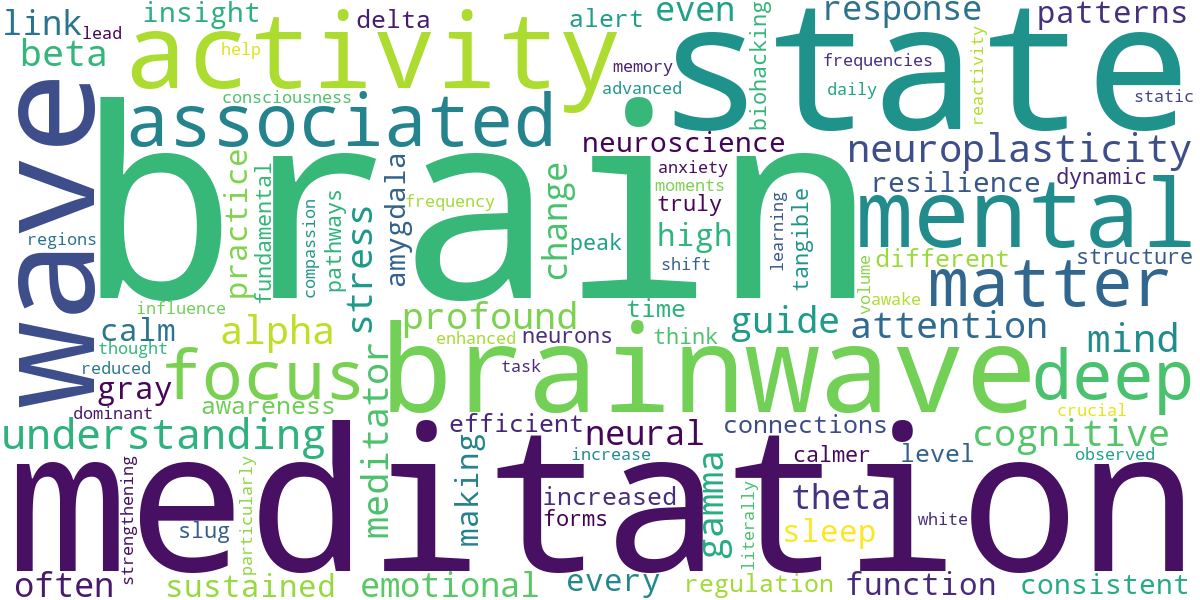document.addEventListener(‘DOMContentLoaded’, function() { document.querySelectorAll(‘.expand-list-button’).forEach(button => { button.addEventListener(‘click’, function() { const listId = this.getAttribute(‘data-target’); const extraListContainer = document.getElementById(listId); if (extraListContainer) { const isExpanded = extraListContainer.style.maxHeight && extraListContainer.style.maxHeight !== ‘0px’; if (isExpanded) { extraListContainer.style.maxHeight = ‘0px’; this.textContent = ‘Show more…’; } else { extraListContainer.style.maxHeight = extraListContainer.scrollHeight + ‘px’; this.textContent = ‘Show less…’; } } }); }); }); .expandable-list { max-height: 0; overflow: hidden; transition: max-height 0.4s ease-in-out; } .expand-list-button { background-color: #f0f0f0; border: 1px solid #ddd; border-radius: 4px; padding: 8px 16px; cursor: pointer; display: inline-block; margin-top: 10px; font-size: 0.9em; font-weight: 600; color: #333; transition: background-color 0.2s; } .expand-list-button:hover { background-color: #e0e0e0; }

What if the most profound transformations you seek – sharper focus, calmer emotions, deeper insight – weren’t just a matter of willpower, but a direct result of intentionally reshaping your brain?
This definitive guide transcends anecdotal evidence, diving deep into “The Neuroscience of Meditation” to unveil how ancient practices tangibly alter your brain’s structure and function. Prepare to gain a foundational understanding of brainwaves, neuroplasticity, and the scientific mechanisms behind meditation’s remarkable power, empowering you to unlock your brain’s true potential.
💡 Key Takeaways
- Meditation directly influences brainwave states, shifting from high-stress beta waves to calmer alpha, theta, and powerful gamma waves.
- Understanding neuroplasticity reveals how consistent meditation physically rewires neural pathways, enhancing cognitive functions and emotional resilience.
- Specific meditative practices can boost gray matter, improve attention span, reduce amygdala activity (fear response), and even slow cognitive decline.
- This guide provides the scientific blueprint to leverage meditation for tangible improvements in mental clarity, emotional regulation, and overall well-being.
In This Article
- — 💡 Key Takeaways
- → 🧠 Understanding Brainwaves
- — ⚡️ The Rhythmic Dance of Neurons
- — 😴 Delta Waves (0.5-4 Hz): The Deepest Slumber
- — 💭 Theta Waves (4-8 Hz): The Gateway to Subconscious
- — 🧘 Alpha Waves (8-13 Hz): The Relaxed Awake State
- — 🧠 Beta Waves (13-30 Hz): Our Active, Alert Mind
- — ✨ Gamma Waves (30-100+ Hz): Peak Performance & Insight
- → 🌱 Meditation & Neuroplasticity
- — 🧠 What is Neuroplasticity, Really?
- — 🔬 How Meditation Remodels Your Brain
- — 💪 Practical Implications: Training Your Brain’s Muscles
🧠 Understanding Brainwaves

Our brains are incredibly dynamic, always buzzing with electrical activity. This activity isn’t random; it forms distinct patterns known as brainwaves, which correspond to different mental states, from deep sleep to peak focus. Understanding these rhythmic patterns is fundamental to truly grasping how meditation influences our minds and, ultimately, helps you in Biohacking Your Mind: The Guide to Meditation & Mental State Control.
⚡️ The Rhythmic Dance of Neurons
Think of your brain as a symphony orchestra, where billions of neurons fire in coordinated patterns. These synchronized electrical impulses generate measurable frequencies, or brainwaves, which are detected using an electroencephalogram (EEG). Each frequency band represents a different state of consciousness and cognitive function.
- ➡️ Not Static: A common misconception is that you are “in” one brainwave state. In reality, your brain is always producing a mixture of all frequencies, with one or two dominating depending on your activity or state.
- ✅ Meditation’s Influence: Meditation trains your brain to intentionally shift its dominant brainwave patterns, moving you towards states of deeper calm, focus, and even enhanced perception.
😴 Delta Waves (0.5-4 Hz): The Deepest Slumber
These are the slowest and highest-amplitude brainwaves, characteristic of deep, dreamless sleep. Delta waves are crucial for restorative processes within the body, including cellular regeneration and the consolidation of memories.
- 🧘 Meditation Link: While primarily associated with unconscious states, some highly advanced meditators, particularly those practicing forms of yoga nidra or deep contemplative meditation, have been observed to exhibit delta activity even while conscious and alert. This indicates profound levels of relaxation and physiological restoration.
💭 Theta Waves (4-8 Hz): The Gateway to Subconscious
Theta waves are often described as the “twilight state” – the realm between wakefulness and sleep. They are prominent during drowsiness, light sleep (especially REM sleep), and states of deep relaxation, creativity, or intuition.
- 🎨 Associated States: Daydreaming, vivid imagery, accessing repressed memories, and moments of spontaneous insight (the “aha!” moments).
- ✨ Meditation Link: Many forms of deep meditation, particularly those involving visualization or guided imagery, aim to increase theta activity. This state facilitates access to the subconscious mind, promoting profound shifts in perspective and often leading to feelings of deep peace and interconnectedness. You might notice this during deep focus with apps like Calm or Headspace when you feel truly “out of your head.”
🧘 Alpha Waves (8-13 Hz): The Relaxed Awake State
Alpha waves are dominant when you are relaxed but still awake and alert. They signify a state of calm readiness, often associated with a peaceful mind and reduced mental chatter.
- 🌟 Associated States: Light meditation, mindfulness, visualization, brainstorming, and being “in the zone” while performing a routine task. When you close your eyes and take a deep breath, you’re likely increasing your alpha activity.
- 📈 Meditation Link: For beginners, a primary goal of meditation is often to increase alpha wave production, moving away from the busy beta state. Brain-sensing headbands like Muse specifically provide real-time audio feedback to help users cultivate a sustained alpha state, making the abstract concept of “calm” tangible.
🧠 Beta Waves (13-30 Hz): Our Active, Alert Mind
Beta waves are the dominant frequency when we are awake, alert, and engaged in cognitive tasks. They are associated with active thinking, problem-solving, decision-making, and focused attention on the external world.
- 🌪️ Associated States: Concentration, analysis, debate, anxiety, and stress. High beta is typical during complex mental work or when facing deadlines.
- 📉 Meditation Link: While essential for daily functioning, excessive or sustained high-beta activity (especially in the higher frequencies) can lead to stress, anxiety, and mental exhaustion. Meditation helps to reduce this hyper-arousal, allowing the brain to shift into calmer alpha and theta states. However, focused meditation requires a healthy level of beta for sustained attention.
✨ Gamma Waves (30-100+ Hz): Peak Performance & Insight
Gamma waves are the fastest brainwave frequency, often associated with high-level information processing, strong cognitive function, learning, memory recall, and moments of sudden insight or “aha!” experiences. They are thought to play a crucial role in binding different brain regions together, allowing for integrated perception and consciousness.
- 💡 Associated States: Peak focus, heightened awareness, compassion, bliss, and states of cognitive synthesis.
- 🚀 Meditation Link: Perhaps the most exciting discovery in the neuroscience of meditation is the sustained increase in gamma wave activity observed in long-term meditators, particularly those practicing compassion or open awareness meditation. Research has highlighted how experienced meditators can voluntarily produce high-amplitude gamma waves, suggesting a link to heightened states of consciousness and empathy. According to studies supported by organizations like the National Institutes of Health, these sustained gamma states are not merely transient but can be a consistent feature of an advanced meditator’s brain, indicating profound neuroplastic changes.
🌱 Meditation & Neuroplasticity

🧠 What is Neuroplasticity, Really?
Forget the old notion that your brain is a fixed, static organ once you hit adulthood. That’s simply not true! Neuroplasticity is the brain’s astonishing, lifelong ability to reorganize itself by forming new neural connections and strengthening existing ones. It’s the fundamental mechanism behind all learning, memory, skill acquisition, and even recovery from brain injury.
Think of your brain not as a rigid structure, but as a dynamic, ever-changing landscape. Every thought, every feeling, every repeated action literally reshapes its contours. This isn’t merely about adding new connections; it’s also about optimizing existing ones and even ‘pruning’ less-used pathways, making your neural network more efficient and adaptable.
🔬 How Meditation Remodels Your Brain
Meditation, far from being just a ‘mental exercise,’ is a powerful catalyst for harnessing this innate capacity. Consistent practice doesn’t just change your mood; it physically and functionally remodels your brain structure. Here’s how it unfolds:
- ✅ Increased Gray Matter Volume: Studies using advanced brain imaging (like MRI) have consistently shown that long-term meditators exhibit increased gray matter volume in key brain regions associated with attention, self-awareness, and emotional regulation.
- ➡️ The prefrontal cortex (PFC), responsible for executive functions, decision-making, and focus, often shows increased density.
- ➡️ The hippocampus, crucial for memory, learning, and emotional regulation, frequently demonstrates increased size and activity.
- ✅ Amygdala Shrinkage & Reduced Reactivity: Conversely, the amygdala, the brain’s ‘fear center’ responsible for processing threats and triggering stress responses, tends to show decreased activity and even reduced gray matter volume in experienced meditators. This leads to a diminished emotional reactivity and a more regulated stress response.
- ✅ Enhanced White Matter Integrity: Beyond gray matter, meditation has been linked to changes in white matter integrity. White matter consists of the insulated ‘cables’ (axons) that connect different brain regions. Improved integrity here means faster, more efficient communication across neural networks, optimizing information flow throughout the brain.
- ✅ Synaptic Strengthening & Pruning: At a more microscopic level, meditation strengthens the synaptic connections (the junctions between neurons) associated with desired states like calm, focus, and compassion. Simultaneously, it can weaken connections related to rumination, anxiety, and automatic negative thought patterns.
The Society for Neuroscience (SfN) highlights the growing body of research demonstrating how consistent meditative practices can lead to measurable structural and functional changes in the brain, supporting its role in mental well-being and cognitive enhancement (Source: https://www.sfn.org/).
💪 Practical Implications: Training Your Brain’s Muscles
Think of neuroplasticity like a muscle: the more you use it in specific ways, the stronger and more efficient it becomes. For meditators, this translates into tangible benefits:
- ➡️ Improved Focus & Attention: Each time you gently guide your attention back to your breath or a chosen anchor during meditation, you are literally strengthening the neural pathways for focus. This makes it easier to concentrate on tasks in your daily life, making you more productive and present.
- ➡️ Enhanced Emotional Regulation: By observing emotions without immediate reaction, you create a neural ‘pause’ between stimulus and response. This rewires your brain to move from knee-jerk reactivity to thoughtful, compassionate responses, building profound resilience.
- ➡️ Greater Stress Resilience: The observed changes in the amygdala mean your brain is less likely to launch into a full-blown stress response for minor triggers, and quicker to recover when it does.
- ➡️ Boosted Creativity & Problem-Solving: A more flexible, integrated brain, with efficient communication between its parts, is naturally more adept at connecting disparate ideas, leading to greater innovation.
The critical takeaway? Your brain isn’t static. Every time you consciously bring your attention back, every time you choose mindful awareness over distraction, you are literally sculpting your brain. This gives immense power to your daily practice and reinforces the importance of consistency. Understanding this dynamic relationship between your mind and brain is key to truly ‘biohacking’ your mental state, a journey we explore further in Biohacking Your Mind: The Guide to Meditation & Mental State Control.
This guide serves as your comprehensive bridge between ancient wisdom and cutting-edge neuroscience, providing the empirical understanding needed to harness meditation’s profound benefits. By understanding your brain’s incredible capacity for change, you are empowered to consciously shape your mind for a life of greater clarity, resilience, and peace.

Recommended Video
Frequently Asked Questions
How does meditation affect brainwaves?
Meditation can induce specific brainwave states, such as alpha waves (associated with relaxation) and theta waves (linked to deep meditation and creativity), leading to changes in brain activity patterns.
What is neuroplasticity in the context of meditation?
Neuroplasticity refers to the brain’s ability to reorganize itself by forming new neural connections. Meditation encourages positive neuroplastic changes, strengthening areas related to attention, empathy, and emotional control.
How long does it take to see neurological changes from meditation?
Studies suggest that noticeable changes in brain structure and function can occur with as little as 8 weeks of consistent daily meditation, though individual results vary.
